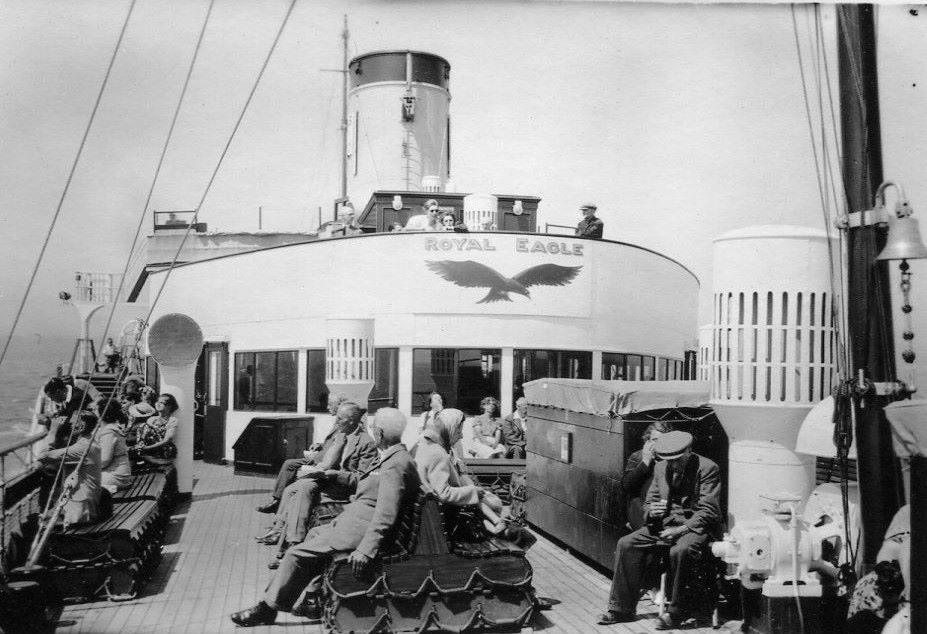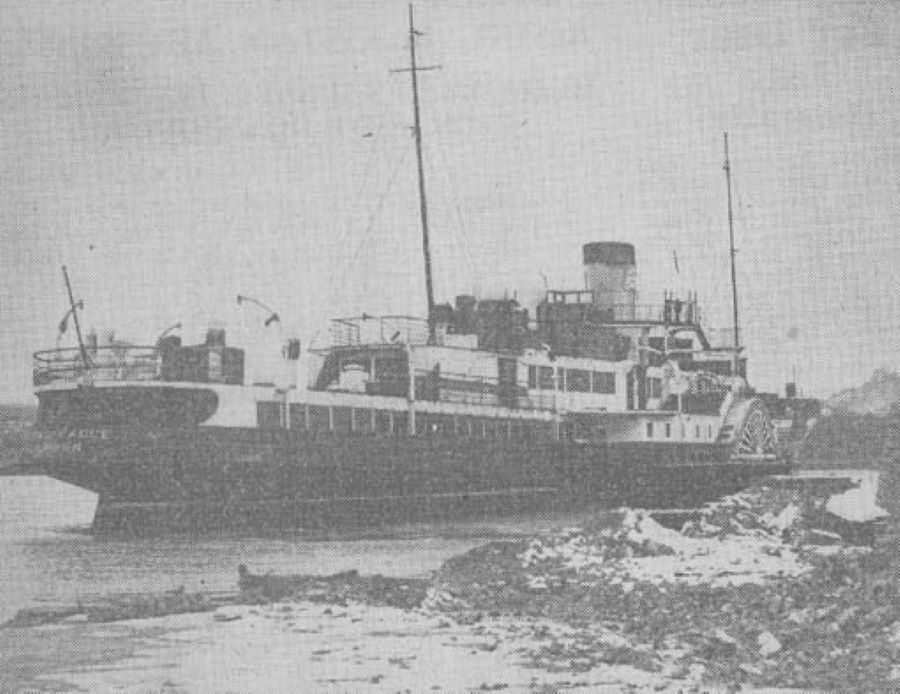
On Sunday 10th September 1950 Royal Eagle had originally been scheduled to make the last trip of the season from Tower Pier (8.30am) to Greenwich (9am), Southend (11.30am) and Clacton (1.45pm) with return from Clacton (3.45pm) for Southend (5.50pm), Greenwich (8.30pm) and Tower Pier (9pm) as shown in the leaflet above.

After the War in 1946 she had been returned to the route for which she was built in 1932 from London to Margate and Ramsgate. In 1949 she was joined by the newly built twin screw motor vessel Royal Sovereign but there was not by then really sufficient business to justify two large ships on the service so for 1950 she was transferred for the first time in her career onto the London to Clacton run leaving Royal Sovereign to continue to Margate and Ramsgate.

Dubbed “London’s Luxury Liner” Royal Eagle had the most comprehensive dining, catering and undercover facilities and accommodation of pretty much any excursion paddle steamer ever built but even she could seat only 310 at any one time for a sit down meal out of her total passenger capacity of 1,900. That was ever a fundamental weakness in excursion paddle steamer design. They were never built to provide anywhere near sufficient dining facilities if all their passengers wanted to sit down to lunch or dinner.

For 1950 the newly built Queen of the Channel was rostered to run trips to view the French Coast from Ramsgate which were a stop gap to replace the pre-war landing cruises to the French ports on account of the Government’s refusal to allow no-passport trips at this time.
These excursions did not meet expectations with passengers not that keen on spending the whole day aboard a ship with no real views to speak of and without the opportunity to go ashore in a foreign land. From 10th August Queen of the Channel was therefore transferred to take over the Clacton run from Royal Eagle which was withdrawn never to sail again.
So on Sunday 10th September 1950 rather steaming down the Thames to Clacton as originally planned on the last day of her 1950 season Royal Eagle had already been laid up for a month and was lying idle with her boiler blown down in Whitewall Creek on the River Medway.

There she continued to lie for the next couple of years until scrapped in 1953 having notched up a career of just thirteen passenger carrying seasons. That’s like from 2008 – 2020. Shocking really.
Tiny Point of Detail: Whitewall Creek remains today next to the Medway Tunnel although it is now very silted up and could no longer accommodate a paddle steamer of the size of Royal Eagle. There was also a lot of in-filling of the adjacent marshland in the 1980s to provide a more solid base for the commercial development of what became known as the Medway City Estate. This required lots of new roads to be built and one of them is called Royal Eagle Close commemorating the name of the Thames paddle steamer which spent her last couple of years laid up in the adjacent creek.
Nor is this the only road named after a paddle steamer in the vicinity. Adjacent to Strood Pier a new housing development built in the 1990s required a new road which was named Kingswear Gardens after KC which at that stage regularly called at Strood Pier.
Kingswear Castle returned to service in 2023 after the first part of a major rebuild which is designed to set her up for the next 25 years running on the River Dart. The Paddle Steamer Kingswear Castle Trust is now fund raising for the second phase of the rebuild. You can read more about the rebuilds and how you can help if you can here.
John Megoran


